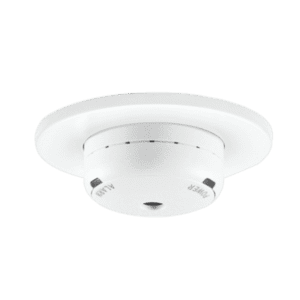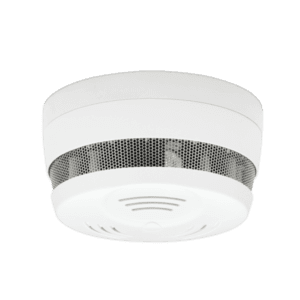When it comes to small things that make a big difference in home safety, there are two things that really stand out: the smoke alarm and the carbon monoxide alarm. But here’s a question: are they the same thing?
Short answer? No. But there’s a lot more to it.
Smoke and carbon monoxide alarms are two of the most common household safety measures you’ll see in a modern Kiwi home. While they are vital for protecting our homes and loved ones, it’s also essential to understand that these have very different functions. Having both devices in your home is crucial; in this blog post, we’ll review why that is.
Read on as we explore the distinctions between carbon monoxide and smoke alarms, their unique functions, and why they should function as a duo, not solo acts.
What is a Carbon Monoxide Alarm?
First up, let’s tackle the lesser-known of these two devices: the carbon monoxide alarm.
Carbon monoxide can be a scary thing to deal with. It’s an invisible gas with no smell or taste, usually produced when gas, oil, wood, and coal combust but don’t finish the combustion process. Unfortunately, this gas is known as a ‘silent killer’ for a very good reason.
Carbon monoxide can build up in sealed spaces, eventually posing a major threat to human health. When inhaled, the gas molecules bind to haemoglobin in the blood, preventing your blood from carrying oxygen around the body. Eventually, this leads to suffocation and, in many cases, is fatal. Its chemical composition makes carbon monoxide almost impossible to detect without specialised equipment.
This is where a carbon monoxide alarm comes in. Designed to monitor the air for the presence of CO gas, these monitors will emit a loud warning signal to alert occupants to a build-up of the gas. This allows you time to leave the area quickly without succumbing to the harmful effects of CO. You can have alarms that tie into the main source of power, and there are battery-operated carbon monoxide alarms as well.

Common sources of carbon monoxide can include malfunctioning gas appliances, blocked chimneys, or running vehicles in enclosed spaces. If you have an internal garage, a fireplace, or run any gas-based appliances in your home, having one of these detectors is especially important.
What is a Smoke Alarm?
On the other hand, smoke alarms are more well-known. As suggested by its name, a smoke alarm is designed to detect the presence of smoke, which can indicate the possibility of a fire nearby. Alarms like these have built-in photoelectric or ionisation sensors to detect smoke particles in the air. If the sensor is tripped, the alarm emits a loud noise to let residents know there is a fire potentially in progress and to evacuate as soon as possible.
Smoke alarms play a major role in early fire detection. The earlier a fire is found, the quicker it can be fought, and the faster occupants can evacuate without getting in harm’s way. A smoke alarm is a must-have to reduce the risk of injuries, fatalities, or undetected fires sprouting up at home.

Thermal heat alarms can act as a supplement to photoelectric smoke alarms. Occasionally, smoke alarms will be tripped by other vapours in the air, as their sensors are designed to pick up on particles like this and alert occupants. Installing a thermal alarm alongside your smoke alarms ensures you’re doubly aware of when a real fire is breaking out versus when steam is coming from your kettle.
Why Having Both Alarms in Your Home is Essential
With two alarms serving such different functions, why is having both in your home important? Aside from their core functions, these two alarm types also generally use different technologies to detect their respective gasses.
CO alarms use electrochemical sensors to look for CO in the air, while smoke alarms usually use photoelectric or ionisation sensors to pick up smoke particles.
The point of having both in your home is to cover any overlap. Fires can produce carbon monoxide, and – as they say – ‘where there’s smoke, there’s fire’ – and that’s what your smoke alarms will catch – but they aren’t designed to trip for anything else. A carbon monoxide alarm may not pick up on a fire with no smoke, and a smoke alarm alone won’t pick up on a carbon monoxide leak.
Luckily, hosting both devices in your home unobtrusively is easy while keeping your family safe. To ensure you’re properly protected against the visible threat of fire and the invisible threat of carbon monoxide, it’s vital to always have both alarms in your home.
Keep them functional with regular maintenance, testing, and battery replacements, as warranted. With alarms like these, creating a safe environment for you and your loved ones has never been easier.
Choose the world’s smallest, most effective carbon monoxide alarm.
At CAVIUS, we embrace the idea that safety can look beautiful with our range of discreet alarms. Our range spans everything from thermal heat alarms to carbon monoxide alarms in NZ.
Enjoy award-winning designs that embrace both form and function. Get in touch to learn more.